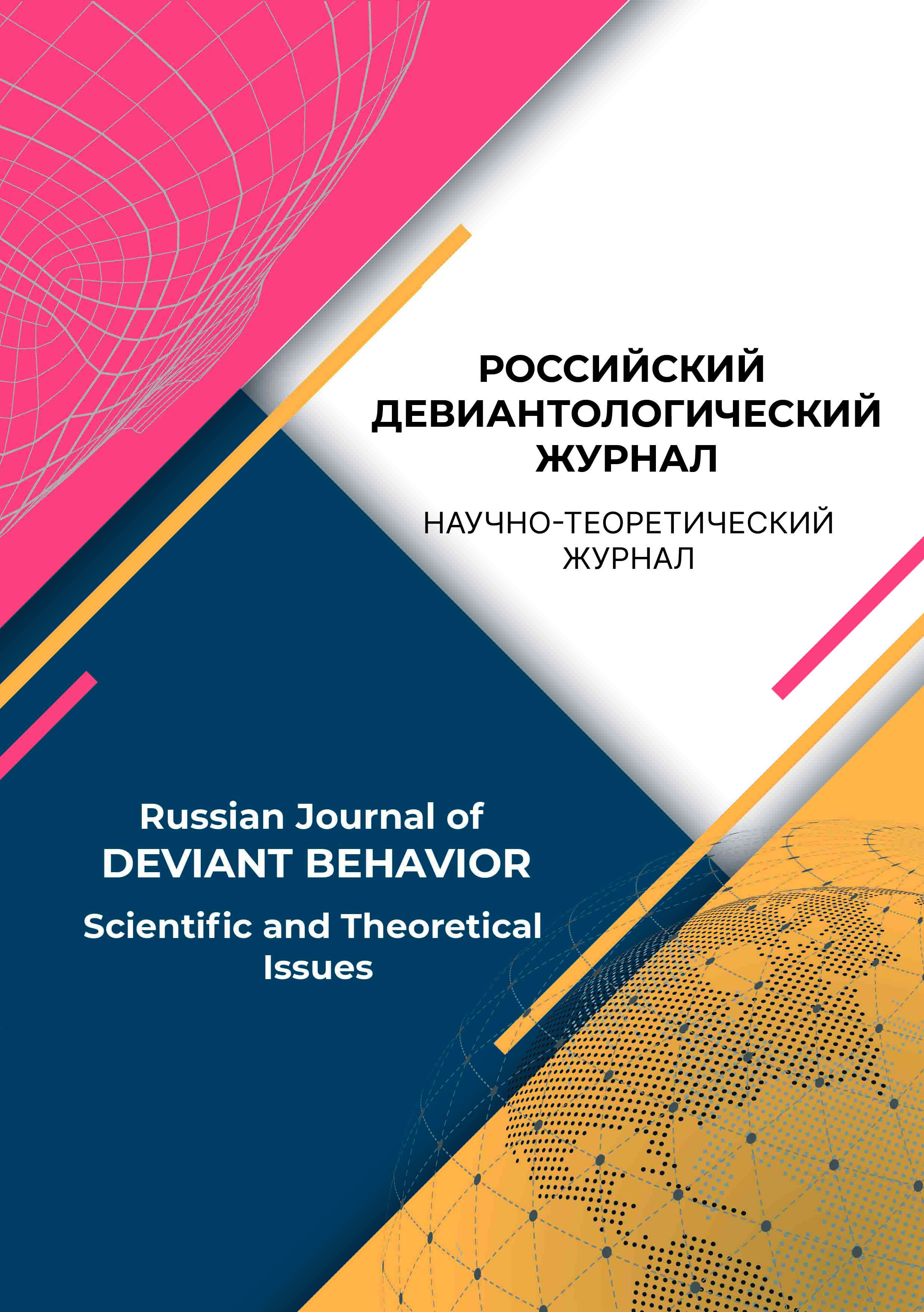Kazakhstan
UDC 316.2
This article is devoted to the study of the causes of social orphanhood, the growth in the number of abandoned and abandoned children. The author focuses on the influence of personal factors on the problem of mother’s refusal from the child. The study of personal factors of abandoning children was carried out in two directions: taking into account maternal deprivation of persons who abandoned children and the characteristics of their socialization in childhood. The main factor in abandoning a child, which young women refer to, is the objective problems of everyday life: lack of housing, lack of work, money. However, in fact, behind them lies the problems of socialization and spiritual and moral order, transmitted from generation to generation.
sociology of childhood, social orphanhood, factors of child abandonment, socialization in childhood, maternal deprivation
1. Bejker, K., Vargi, A. Ya. (red.) (2005). Teoriya semejnyh sistem Myurreya Bouena. Osnovnye ponyatiya, metody i klinicheskaya praktika. Moskow: Kogito-Centr.
2. Bekker, G. (1998). Autsajdery. V Konteksty sovremennosti: hrestomatiya (str. 61-65). Kazan’: ABAK.
3. Burd’e, P. (2007). Social’noe prostranstvo. Polya i praktiki. Moskow: Aletejya.
4. Veber, M. (1990). Osnovnye sociologicheskie ponyatiya. V Izbrannye proizvedeniya. Moskow: Progress.
5. Giddens, E. (2005). Ustroenie obshchestva. Ocherk teorii strukturacii. Moskow: Akademicheskij proekt.
6. Dement’eva. I. F. (2008). Socializaciya detej v sem’e: teorii, faktory, modeli. SOCIS, (1), 40-49.
7. Doklad YUNISEF (2006). Polozhenie detej v mire 2006. Le Fonds des Nations Unies pour l’enfance (UNICEF). https://www.unicef.org/
8. Dyurkgejm, E. (1996). O razdelenii obshchestvennogo truda (perevod s francuzskogo A. B. Gofmana). Moskow: Kanon.
9. Dyurkgejm, E. (1998). Samoubijstvo: sociologicheskij etyud (perevod s francuzskogo A. N. Il’inskogo). Saint Petersburg: Soyuz.
10. Kazahstanskaya pravda (2013). Tak perepletayutsya sud’by. V Kazahstanskaya pravda ot 08.06.2013 g. https://kazpravda.kz/?ysclid=lbm8bpuhm4336637706
11. Lemert, E. (1998). Social’naya patologiya. V Konteksty sovremennosti: hrestomatiya (str. 58-61). Kazan’: ABAK.
12. Mahallya, vsya pravda ob Uzbekistane. V Kazahstane snizhaetsya chislo otkazov ot detej. https://maxala.org/
13. Merton, R. K. (1992). Social’naya struktura i anomiya. Sociologicheskie issledovaniya. 3, 91-105.
14. Merton, R. K. (2003). Social’naya struktura i anomiya. Sociologiya. Hrestomatiya. Moskow: Gardariki.
15. Rybinskij, E. M. (1997). Upravlenie social’noj zashchity detstva. Rossijskij zhurnal social’noj raboty, 15, 25-31.
16. Shcheglova, S. N. (1999). Detstvo kak social’nyj fenomen: Koncepciya social’nogo konstruirovaniya detstva: dis. … d. sociol. n. Moskow.
17. Yadov, V. A. (2003). Strategiya sociologicheskogo issledovaniya: opisanie, ob”yasnenie, ponimanie social’noj real’nosti. Moskow: Akademkniga.
18. Chamberlen, R. W. (1988). Beyond individual risk assessment. Washington.
19. Goffman, E. (2000). Asylums. London: Penguin Books.
20. Nash, E. S. (1990). Aggressive behaviors in young mother. Pan African Medical Journal, 77(3), 147-151.
21. Newell, F. (1934). Psychodynamics of maternal rejection. American Journal of Orthopsychiatry, 4, 387-401.
22. Toffler, A. (1970). Future Shock. New York: Random House.
23. Wasserman, S. (1967). The abused parent of the abused child. Children, 14 (Sept.- Oct.), 175-179.
24. Winter, S. (1987). The abandoned newborn. Harefuah, 112 (7), 360-362.















